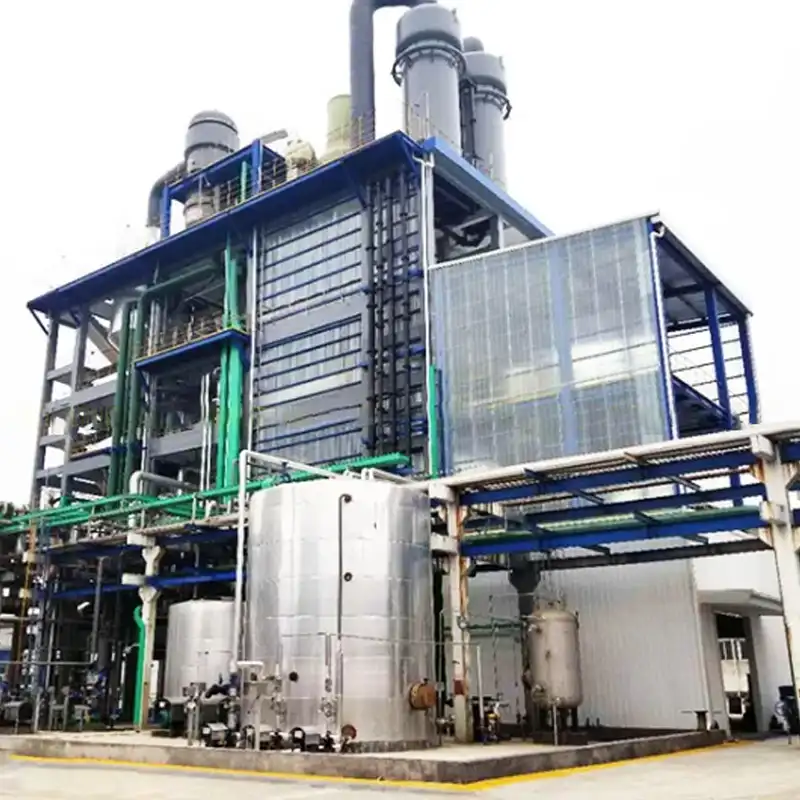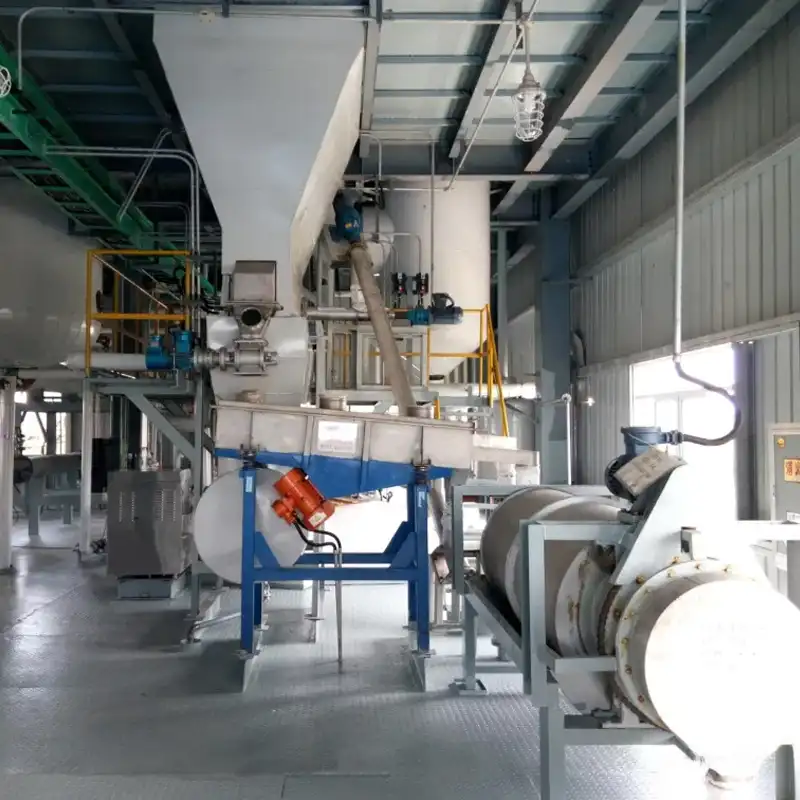
What Raw Materials Change the Cost Most?
The stuff you buy to make calcium chloride really changes the price. Choosing hydrochloric acid and limestone, how pure they are, how much their prices jump around, and whether you can always get them easily all make a big difference. Getting these things well and handling them smartly is key to keeping costs down and quality good.
Stuff Used to Make Calcium Chloride
We use hydrochloric acid and limestone to make dry calcium chloride. This includes making the liquid calcium mixture (CaCl2), the steps to turn it into dry granules, and special designs like pipes, wiring, controls, valves, and other needed systems. Picking good starting stuff makes making it easier and the final product better.
This line can use many kinds of hydrochloric acid. It doesn’t matter if the acid comes from making caustic soda with ionic membranes, is a leftover from making PCl3, MCA, Na2SO4, K2SO4, or comes from cleaning up waste from making strong bleach powder. All these types can be used.
Changing Prices and Getting Supplies
The cost of the starting stuff is a big part of the total cost. Hydrochloric acid prices go up and down depending on how much factories want it and how easy it is to get from different places. Limestone price changes depend on where the rock is dug up, how far it must be moved, and the type of rock. Problems getting supplies can badly mess up making the product and make buying costs higher. Having more than one supplier helps keep costs steady.
How Pure Stuff Changes Costs
Very pure starting stuff costs more. But, it makes a better final product and might need less work. The dry calcium chloride made can be over 95% pure. The leftover gases from making it can be cleaned to meet rules. Using cheaper, less pure stuff might need extra cleaning steps. This adds to the total cost of making it.
How Does Power Use Change Costs?
Steps needing lots of power, like heating, drying, and making granules, add a lot to the running costs. Newer machines, like spray fluidized bed dryers, use heat better. Smart ways to handle water and steam help lower utility bills. Using power wisely is key to cutting costs over time.
Steps Needing Lots of Power
Making calcium chloride needs a lot of power for heating, drying, and making granules. The granule-making system uses spray fluidized bed drying. This makes stuff touch more hot air, so heat moves better and less power is used. This new drying way costs much less to run than older ways.
Water and Steam Needs
Water is used for cooling, cleaning, and making steam. This adds to running costs. Steam is needed for heating and keeping the right warmth during making. This also adds a lot to the utility bills. Systems that clean and reuse water help use less and cost less.
Ways to Use Less Power
Because the gas leaving is usually cooler than the hottest product, the system uses heat well. New lines have systems to catch leftover heat and smart designs. This cuts wasted power and lowers running costs.
How Do Workers and Running Things Add to Cost?
How much the machines run themselves changes how many workers you need. Full self-running lines need fewer workers but ask for skilled fixers. Training, watching the line, and checking quality also cost money. Finding the right mix of self-running and workers is key for good costs.
Workers Needed Based on Self-Running Level
The machines can run by themselves. More self-running means fewer workers but needs skilled people to run and fix them. Lines needing more workers cost less to build at first.
Training and Skills Needed
Special training makes sure things run safely and well. Workers must know the chemical steps, safety rules, and how to fix machines. Spending on good training cuts risks and makes making stuff better.
Watching the Line and Checking Quality
The whole set of machines is simple to run and very flexible. Even if how much stuff you put in or how wet it is changes, the system keeps working well. Always watching and checking quality needs people, adding to running costs.
How Does Building Design Change Upfront Cost?
Designing and building a place to make calcium chloride costs a lot upfront. How much land you need, building work, setting up water and power, and moving stuff inside all change the starting cost. A smart building plan and good moving systems make work smoother and cut long-term running costs.
Land Needed Based on How Much You Make
How much you plan to make changes how big the place must be. Medium or big factories need lots of land for machines, storing starting stuff, and keeping finished product. Getting the land ready costs different amounts based on the ground and what’s already there.
Building Work and Setting Up Utilities
Making strong bases for heavy machines, connecting water and power, and putting up buildings cost a lot. Special concrete bases for reactors and dryers need big money. Wiring, water pipes, and steam systems add to building costs.
Moving Stuff Inside the Factory
Good systems to move stuff cut running costs and make work faster. Conveyor belts, storage bins, and packing machines need careful planning and money. But they lower long-term worker costs and make work better.
How Do Environmental Rules Change Cost?
Strict rules mean spending money on cleaning waste, controlling smoke, and getting permits. These steps add to building and running costs. But, they make sure making things is safe and cuts risk. Good pollution systems also make work better and show the company cares.
Systems to Clean Waste Water
The dryer design meets green rules and loses less material. Dry dirty air is cleaned by special equipment before going outside. Good waste cleaning systems cost a lot upfront and to run.
Smoke Cleaning Machines Needed by Law
Machines to clean air, like scrubbers and filters, add to building and running costs. Watching and fixing these machines often keeps you following rules but costs more to run.
Permits and Checking Costs
Getting green permits, regular checks, and reporting to the government need people and time. Hiring experts and having your own rule-checkers add to running costs.
How Does Making Special Changes Change Price?
Lines built just for a certain job or to fit with other machines cost more upfront but help later. Special engineering, research, and special coverings might be needed. This adds cost but can make the product better and beat others.
Changes for Different Jobs
Also, the line can pick different machines based on how much you want to make. This meets needs from different buyers. Making special changes lets makers set up their systems for special jobs. But it usually costs more at the start.
Fitting with Other Factories
Adding to old factories or making new lines work with current machines needs special engineering and changes. However, fitting in can cut total building needs and make work better.
Extra Costs for Research or Special Parts
Special jobs might need unusual materials, coverings, or changes. Research costs for special jobs add to project price. But they can help you win in certain markets.
How Does Picking Machines Change Total Cost?
Choosing reactors, evaporators, dryers, and how much it runs itself changes both building and running costs. Good, long-lasting machines break less and stop work less. This makes paying more at first worth it through better work and lasting longer.
Main Parts of the Line
Reactors, evaporators, and dryers are the heart of making it. Better designs make work better and the product nicer.
Reactor Systems
How reactors are built and what they are made of changes how well they work and cost. Materials that don’t rust cost more at first. But they need less fixing and last longer.
Evaporation Units
Good evaporators use less power but make more. Better heat exchanger designs use heat well and cut running costs.
Drying and Flaking Machines
Simple to run, easy to fix, and last a long time. New drying machines work better and need less fixing. This makes paying more at first okay because running costs are lower.
Cost Differences Between Worker-Run, Partly Self-Run, and Full Self-Run Lines
How much it runs itself links to upfront cost. Full self-run lines cost more to build but need fewer workers, make more consistent product, and are safer. Partly self-run lines balance building cost and running cost.
Why Machine Strength and Fixing Needs Matter
Good machines that last a long time cost less to replace and stop work less. Regular fixing keeps them working best but needs people and spare parts ready.
Why Is Picking the Right Seller Important for Costs?
Who you buy the machines from changes the price, help you get, warranty, and spare parts. A good seller delivers on time, stops work breaks, and saves money later through good help after buying and fixing support.
Price Differences Between World Machine Makers
Machine prices change a lot between makers. It depends on how good the tech is, material quality, and what help is included. Looking at total cost over time is smarter than just the first price.
Differences in Help, Warranty, and After-Buy Service
Good help and long warranty cut risks and fixing costs. Quality help after buying means problems get fixed fast and work stops less.
Delivery Time and Spare Parts Ready
Getting machines on time and having spare parts easy to get stops project delays and work breaks. How close the seller is and their service network really change long-term running costs.
Who is Aoliande and Why Pick Them?

Hebei Aoliande Chemical Equipment Co., Ltd. is a top maker focused on calcium chloride and other chemical lines. They have modern reactor designs, power-saving dryers, and machines that fit together well. Aoliande gives good, custom answers backed by strong help and world knowledge.
Company Info and What People Think
Hebei Aoliande Chemical Equipment Co., Ltd. makes many lines professionally:
- Mannheim process potassium/sodium sulfate lines
- Hydroxy propyl methyl cellulose lines
- Calcium chloride production lines
- Water soluble fertilizer lines
- FRP pipe winding machines
- FRP tank winding machines
- FRP molded grating machines
- FRP pultrusion machines
- FRP rebar machines
They keep getting better through new skills and tech. Relying on good tech, careful work, strong quality, and full service, they passed ISO9001, ISO14001, OHSAS18001 checks. Now they have 300 workers. They sell 20,000 tons of FRP products yearly. Their products go everywhere: USA, Brazil, Japan, Germany, India, Malaysia, Iran, Egypt, etc. They earn trust from new and old buyers.
Key Tech from Aoliande
New reactor designs, good dryers, and fitting machines together make sure work is best and costs are good.
Good Reactor Design
New reactor designs make chemical reactions best while using less power and making top quality.
New Drying Systems
New drying tech uses heat better and cuts running costs, keeping quality high.
Fitting Machines Together Well
Flexible designs allow custom changes and adding more later, keeping work good.
Promise on Quality, Custom Work, and Help
Hebei Aoliande Chemical Equipment Co., LTD. can both make and design materials, structures, and products. They give customers tech advice, supply goods and materials, move things, and help set up.
Conclusion
Line costs depend on many linked things. These include how good and easy to get the starting stuff is, power-saving tech, how much it runs itself, green rules, and who you buy from. The main steps are making the calcium liquid and drying it into granules. Each step adds to the total cost. Managing cost well needs looking at both the first big payment and the long-term running costs.
FAQs About Calcium Chloride Production Line Costs
How long time is needed to get money back?
Usually 3-7 years. It depends on how much you make, how much it runs itself, local prices, and how well it works. Better systems might take longer to pay back but make more money later.
Can I improve my old line instead of new?
Yes, often old places can get better machines and changes. Improving usually costs 40-60% less than new. It makes work better and lets you make more.
How much space is needed for a medium factory?
Usually 2-5 acres. This includes making area, storing stuff, keeping product, and utilities. Exact space depends on how much you make, building layout, and local rules.





